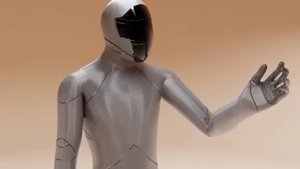Overview
In the increasingly noisy arena of humanoid robotics, where bombastic demos and billionaire promises dominate the headlines, a Norwegian company named 1X Technologies is taking a decidedly more Scandinavian approach: quiet, methodical, and unsettlingly sensible. Formerly known as Halodi Robotics, 1X is on a mission to bring androids into the workforce and, eventually, your home. Their secret weapon? A healthy dose of pragmatism and the backing of AI heavyweight OpenAI.
While competitors are busy teaching their bipedal bots to do backflips, 1X has been deploying its wheeled android, EVE, in real-world logistics and security roles. This iterative strategy provides invaluable data and, presumably, revenue. Now, they’re channeling that experience into NEO, a bipedal home robot designed to be as safe and approachable as a piece of IKEA furniture. 1X isn’t just building a robot; it’s building a case for a future where androids are ubiquitous, and it’s doing so one practical step at a time. The question is whether this slow-and-steady approach can win the race against the flashier, faster-moving competition.

Key Points
- Founded: 2014 in Stavanger, Norway, originally as Halodi Robotics.
- Leadership: Helmed by CEO and co-founder Bernt Øivind Børnich.
- Primary Focus: Developing and deploying general-purpose androids for commercial and domestic use.
- Key Products: The wheeled EVE android for commercial tasks and the forthcoming bipedal NEO android for home and retail environments.
- Core Technology: A proprietary “embodied AI” platform that allows robots to learn from human demonstration, powered by large-scale data gathering from their EVE fleet.
- Major Backing: Secured a $23.5 million Series A led by the OpenAI Startup Fund in March 2023, followed by a massive $100 million Series B in early 2024.
- Differentiator: A focus on inherent safety through compliant, soft-bodied hardware and a data-driven approach to AI development, starting with commercially viable wheeled robots before tackling the bipedal challenge.
Analysis
History and Evolution
Before it was the sleek, OpenAI-backed 1X, the company was Halodi Robotics, founded in 2014. This history is crucial because it informs their entire strategy. Instead of immediately chasing the bipedal holy grail, they developed EVE, an android on wheels. This was a masterstroke of pragmatism. A wheeled platform sidesteps the near-insurmountable challenges of dynamic bipedal locomotion, allowing the company to focus on manipulation, navigation, and AI. By deploying EVE units as security guards and logistics helpers, 1X created a fleet of data-gathering machines, learning from the messy, unpredictable real world while rivals were still stuck in the lab. The rebranding to 1X signaled a new level of ambition, supercharged by OpenAI’s investment, to leverage this foundation for the next great leap: a true bipedal home android.
Leadership and Technology
At the helm is Bernt Øivind Børnich, a CEO who seems more interested in solving engineering problems than in generating hype. This ethos is reflected in the company’s technology. The core of 1X’s approach is what they call “embodied AI.” They use a telepresence system where human operators control EVE robots, performing tasks like sorting boxes or patrolling warehouses. The robots’ onboard systems watch, learn, and gradually build autonomous capabilities from this human-provided data.
The partnership with OpenAI is the force multiplier here. While 1X provides the body and the real-world data, OpenAI provides the cutting-edge AI models to make sense of it all. This symbiotic relationship allows 1X’s androids to move beyond pre-programmed routines and develop a generalized understanding of tasks. It’s a powerful combination that gives them a significant edge in the race to build a robotic brain that can actually function outside of a controlled demo.
Market Position
The humanoid robot market is a circus of big names and even bigger claims. You have Tesla’s Optimus, backed by Elon Musk’s formidable manufacturing power and penchant for audacious timelines. Then there’s Figure AI, another OpenAI-blessed contender, which has wowed with its rapid progress and partnerships. Agility Robotics is already putting its bipedal robot, Digit, to work in warehouses.
Amid this chaos, 1X is the quiet contender. Their unique selling proposition is a proven, data-driven path to autonomy. While others show off flashy, one-off demos, 1X can point to a fleet of EVEs that have been working 24/7 for years. Their design philosophy for NEO also sets them apart. Its soft, fabric-covered body and minimalist face are designed to be non-threatening—a robot you wouldn’t mind having around your kids, as opposed to a skeletal machine that looks like it’s one software glitch away from reenacting a sci-fi horror film.
Verdict
In a field defined by spectacle, 1X Technologies stands out for its refreshing lack of it. Their strategy of starting with a practical, wheeled robot to build a robust data pipeline and AI foundation is not just smart; it’s a template for how to build a sustainable robotics company. The design of NEO, which prioritizes psychological safety as much as physical safety, shows a deep understanding of the real barriers to bringing androids into our daily lives. With OpenAI’s brainpower and a grounded, iterative hardware plan, 1X has assembled all the right pieces.
However, the chasm between a wheeled logistics bot and a bipedal butler is vast and littered with the corpses of failed robotics ventures. The dexterity, balance, and common-sense reasoning required for a home robot are orders of magnitude more complex than patrolling a warehouse. While their data-first approach is sound, they are still competing against companies with immense resources and a tolerance for burning cash at a spectacular rate. The market may not wait for the slow-and-steady tortoise to cross the finish line.
Ultimately, 1X is betting that the secret to winning the android race isn’t about being the fastest or the strongest, but the smartest and the safest. NEO is less of a technological brute and more of a gentle companion, designed to integrate rather than intimidate. If they can pull it off, they won’t just sell a product; they’ll have created the first android that people might actually want to welcome into their homes. But for now, it remains a beautifully designed promise, waiting to prove it can do the dishes without smashing them.





